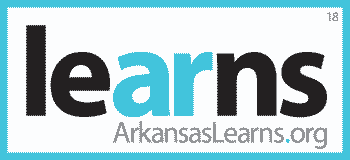In response to the Arkansas Department of Education Commissioner’s request to the Office for Education Policy (OEP), led by Dr. Gary Ritter, to determine if NSLA funding was effective in regard to student performance, the following is a synopsis regarding funding levels, findings, and new recommendations.
Current NSLA (acronym for National School Lunch Act) funding levels are based on a formula which takes into account all students in a school that are identified as free or reduced price lunch students. The current funding levels follow:
| Percent of NSLA Students in a School | Funding Level Per NSLA Student |
| 0 – Less than 70% | $517 |
| 70% to Less than 90% | $1,033 |
| 90% Plus | $1,549 |
Findings of the study revealed that:
- The jump from 69% NSLA students to 70% NSLA students results in a large ($516) per student difference. The jump between 89% and 90% is similarly steep.
- In examining schools’ academic performance on state benchmark math and literacy tests on either side of the funding jumps, for those schools with concentrations of poverty students between 64% and 69% compared to those with 70% to 75%, these two groups performed nearly identically.
- In examining schools at 90% poverty and those just below that line, schools in the high 80% poverty range outperformed districts just above 90%.
Students with household incomes under 130% of the federal poverty level are eligible for free lunches; those with incomes between 130% and 185% are eligible for reduced price lunches. Based on the data, OEP gave two recommendations which provide more money to schools for students who qualify for free lunches than for students who qualify for reduced price lunches:
- Develop a smoother funding model that provides funding on a sliding scale with no “jumps.”
- Apply 100% weight for free lunch students and 75% weight for reduced price lunch.
- For districts that have fewer poverty students, there would be a floor of $200 per poverty student paid.
In running the calculations of the money saved by applying the recommendations, the state would save $19 million.
For these reasons, Arkansas Learns supports SB811, to amend state categorical funding for the education of economically disadvantaged students, or an appropriately amended version thereof.
